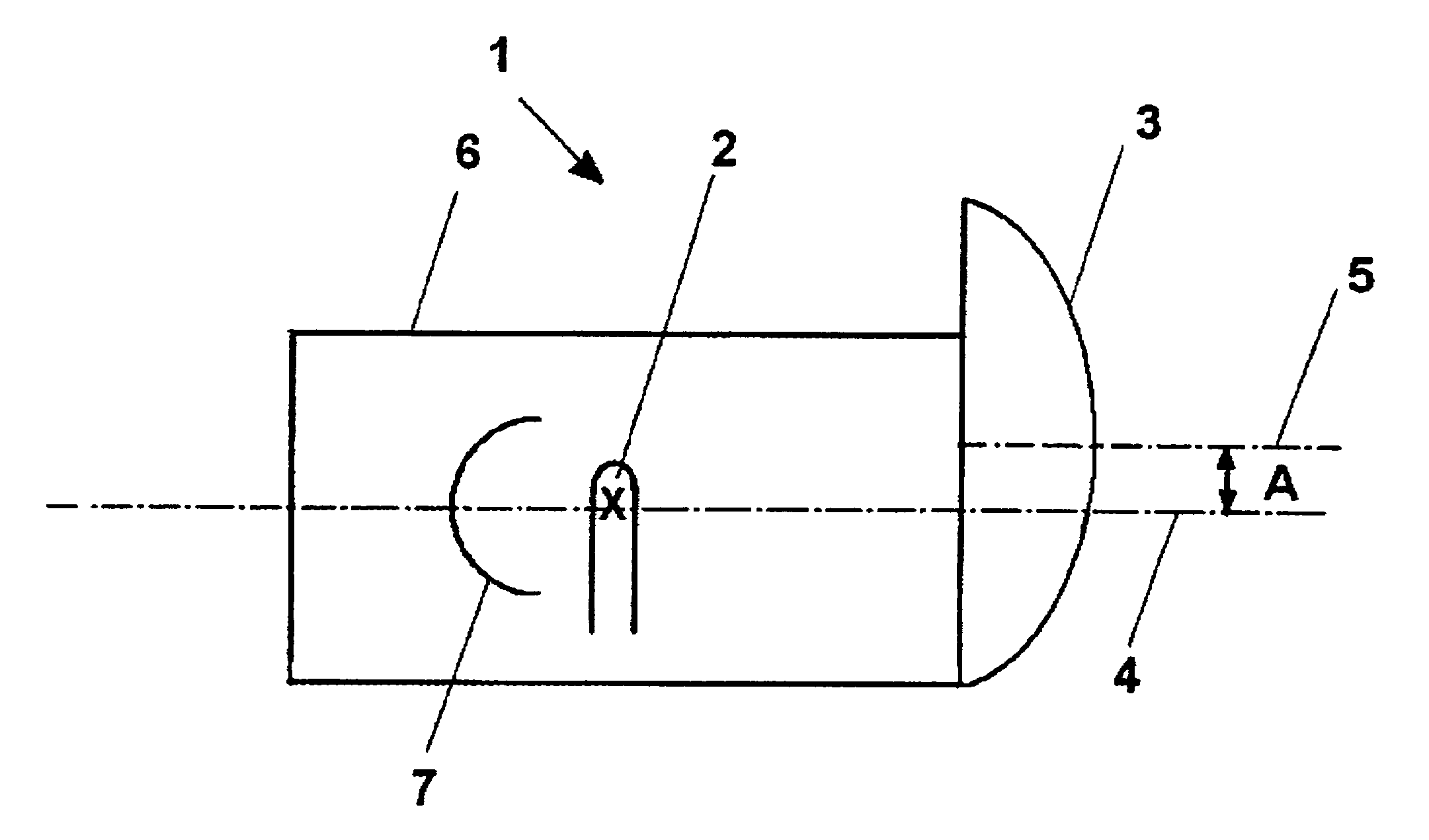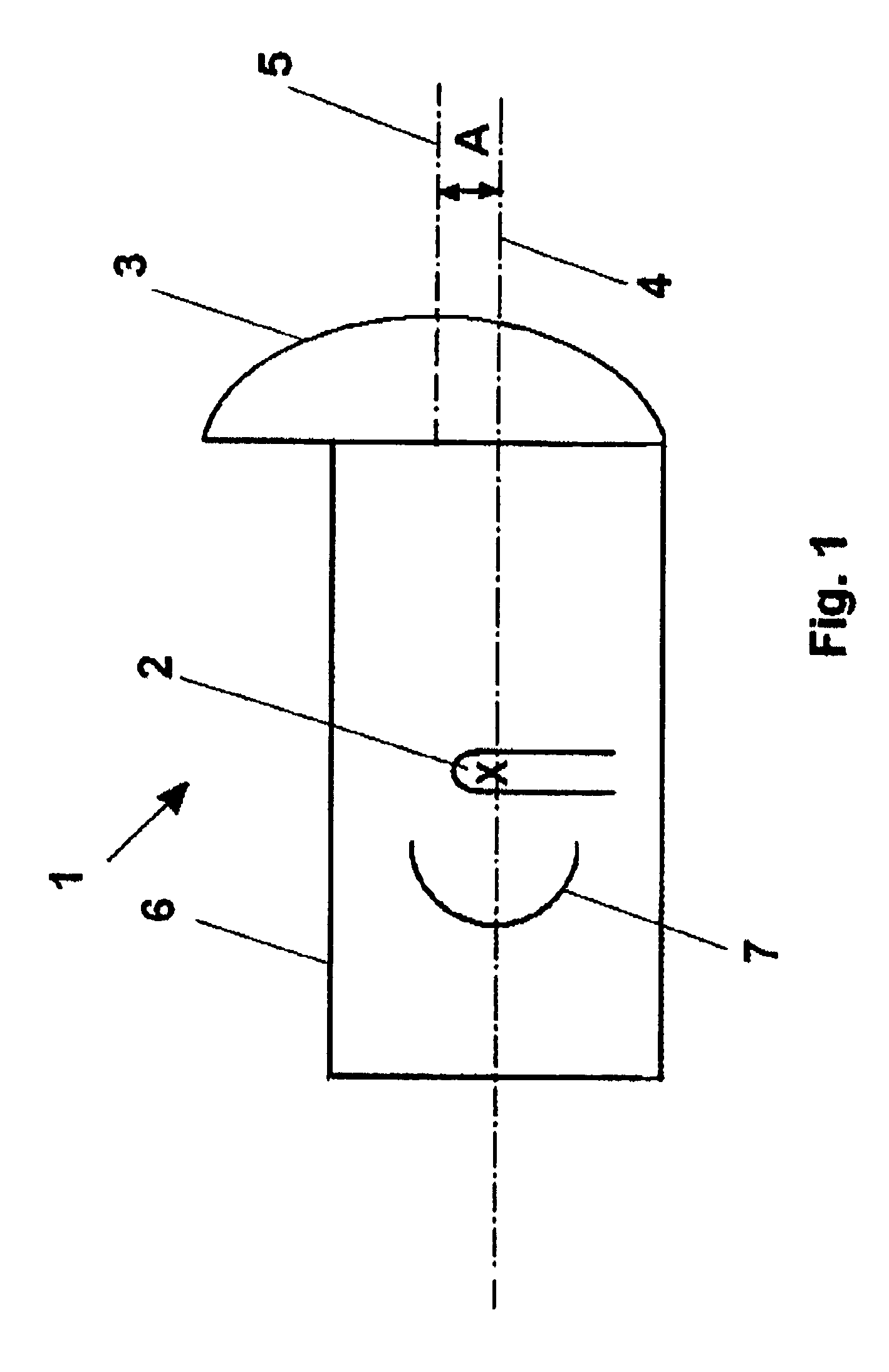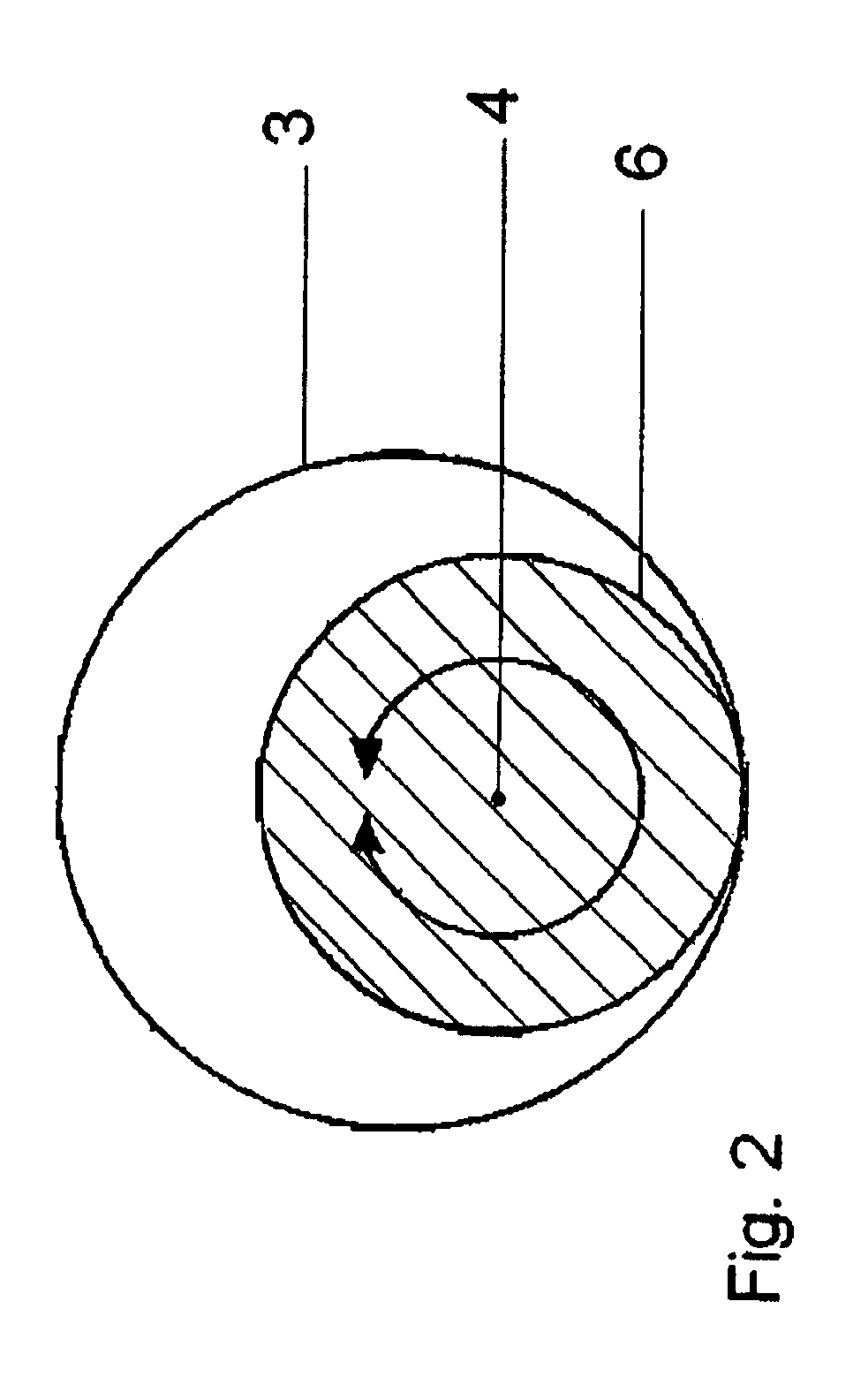Focusable spotlight with asymmetrical light distribution
a spotlight and asymmetric technology, applied in the field of spotlights, can solve the problems of unfocusable, unfavorable light distribution results, unfavorable adjustment of light distribution results, etc., and achieve the effect of reducing energy expenditure, facilitating light intensity transition, and facilitating lighting
- Summary
- Abstract
- Description
- Claims
- Application Information
AI Technical Summary
Benefits of technology
Problems solved by technology
Method used
Image
Examples
Embodiment Construction
[0021]Reference will now be made in detail to the preferred embodiment of the present invention, examples of which are illustrated in the accompanying drawings. Wherever possible, the same reference numbers will be used throughout the drawings to refer to the same or like parts. Hereinafter, embodiments of the present invention will be explained with reference to FIGS. 1 through 5.
[0022]A spotlight 1, which is illustrated in FIG. 1 as a first embodiment of the invention, comprises a housing 6. Inside the housing 6, a lamp 2 and a reflector 7 assigned to lamp 2, are arranged. A principal optical axis 4 of the spotlight 1 extends through the lamp 2 and the reflector 7 in the center of the cavity formed by the housing 6, as shown in FIG. 1.
[0023]The lamp 2 and the reflector 7 are movable inside the spotlight 1 so that the angle of radiation of the spotlight 1 can be altered. The ability to alter the angle of radiation is known from prior art and will not be described herein. For exampl...
PUM
 Login to View More
Login to View More Abstract
Description
Claims
Application Information
 Login to View More
Login to View More - R&D
- Intellectual Property
- Life Sciences
- Materials
- Tech Scout
- Unparalleled Data Quality
- Higher Quality Content
- 60% Fewer Hallucinations
Browse by: Latest US Patents, China's latest patents, Technical Efficacy Thesaurus, Application Domain, Technology Topic, Popular Technical Reports.
© 2025 PatSnap. All rights reserved.Legal|Privacy policy|Modern Slavery Act Transparency Statement|Sitemap|About US| Contact US: help@patsnap.com



